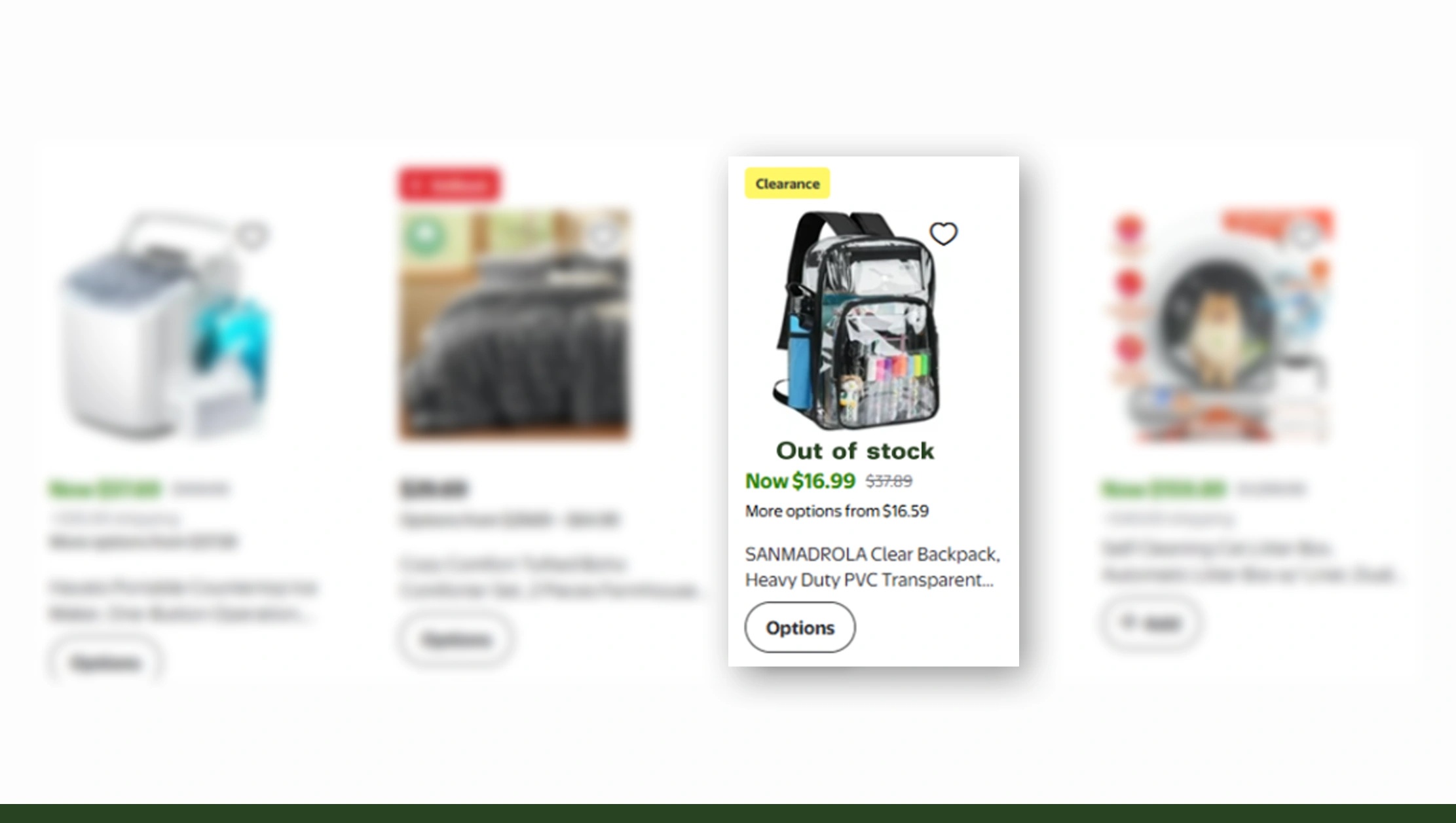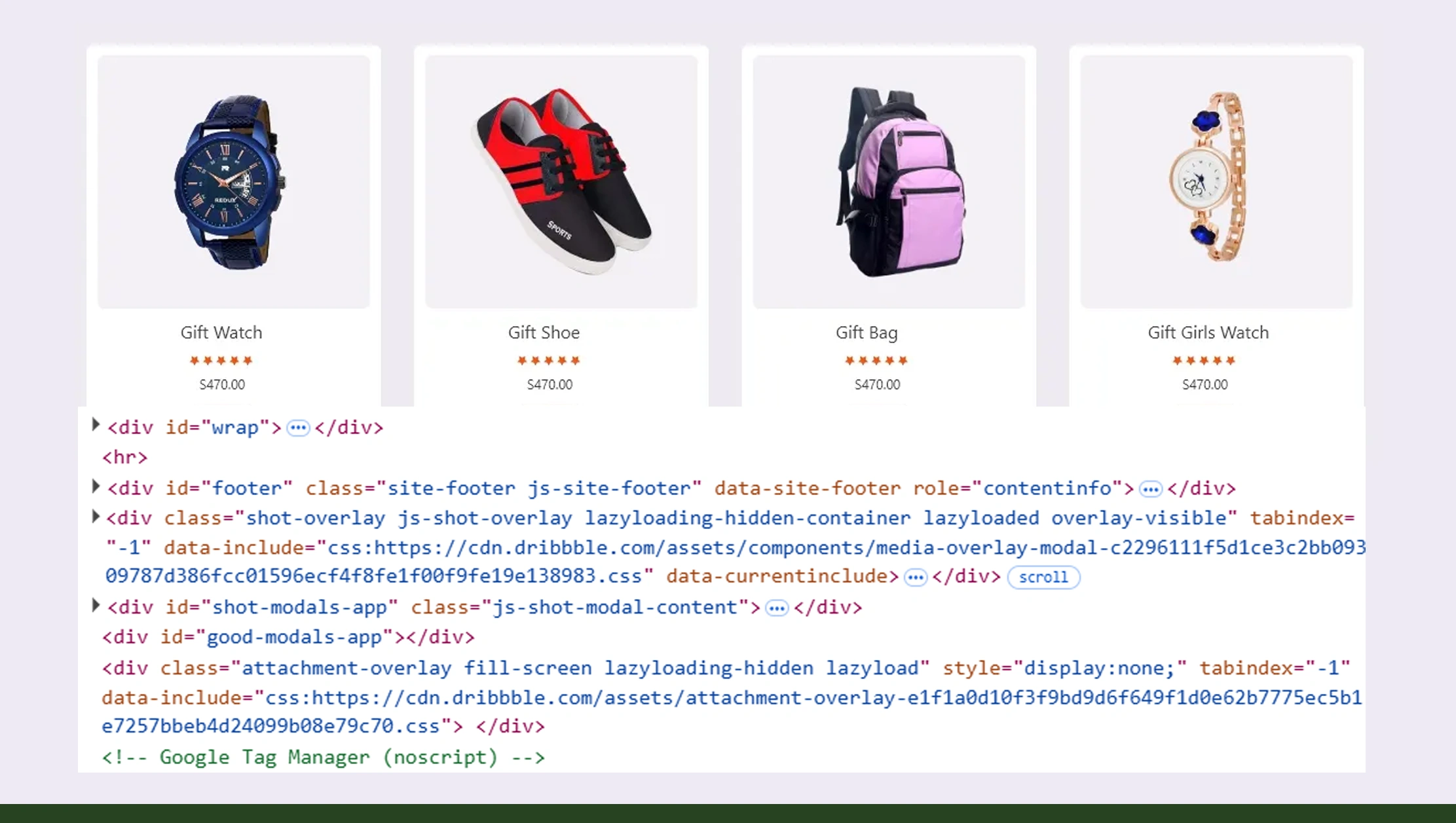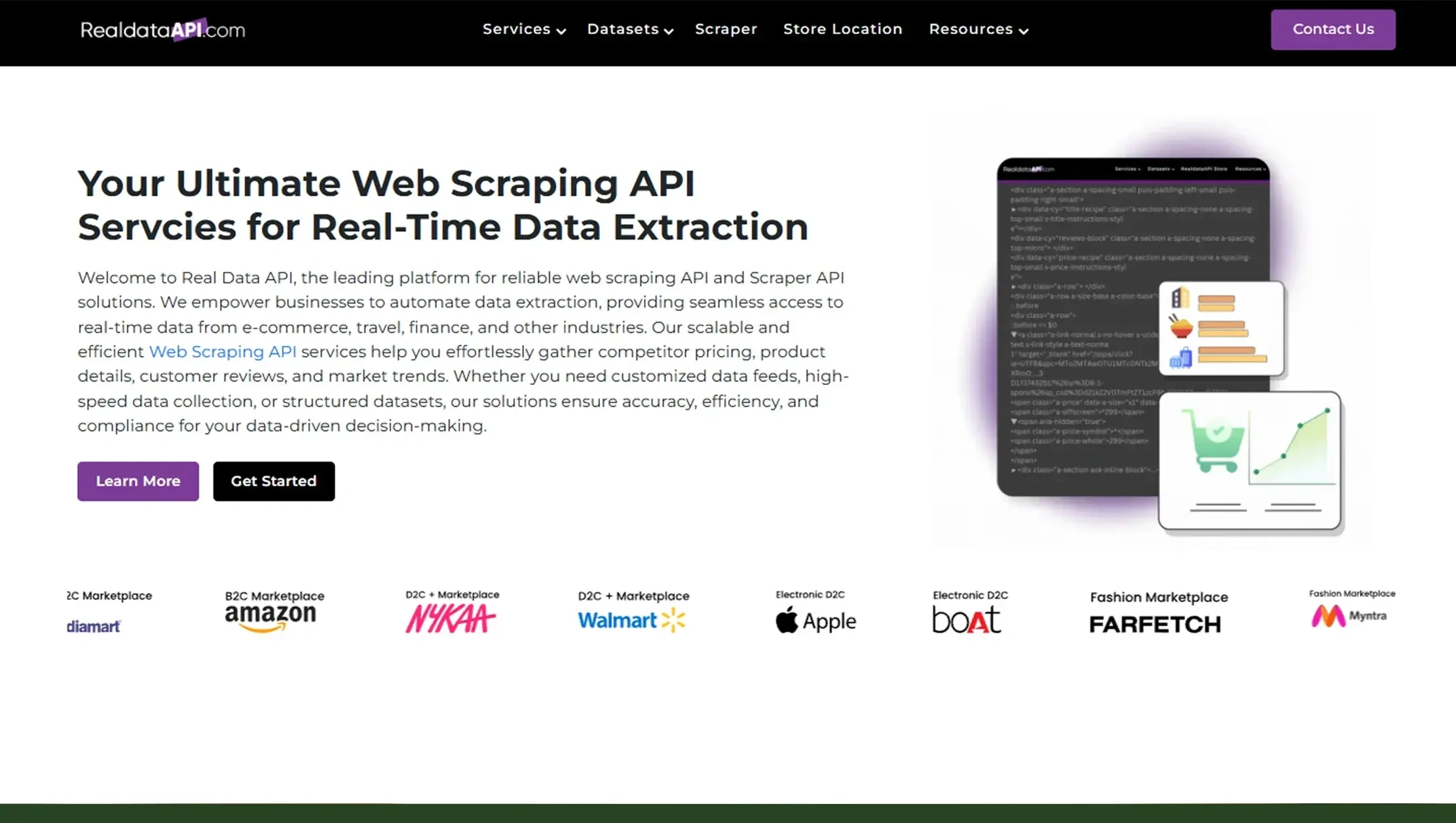

Introduction
In today’s e-commerce landscape, businesses are constantly seeking ways to optimize their fulfillment operations to meet rising customer expectations. Understanding the differences between local store fulfillment and warehouse fulfillment has become critical for maximizing efficiency and reducing costs. Leveraging technology, particularly APIs, is key to achieving this balance. The Store vs Warehouse Fulfillment API is a leading solution that provides precise, real-time insights into these fulfillment strategies.
Local stores offer proximity to customers, enabling faster deliveries and lower shipping costs for nearby buyers. Warehouses, on the other hand, provide centralized storage for large inventories, supporting scalability and broad distribution networks. Each method has distinct advantages and limitations, making informed decision-making essential for businesses that want to optimize their supply chain performance.
By integrating the Store vs Warehouse Fulfillment API, businesses can evaluate inventory levels, shipping times, cost implications, and customer satisfaction metrics for both fulfillment channels. This approach ensures a data-driven strategy for managing orders efficiently, whether they ship from a nearby store or a central warehouse. Additionally, features like Fulfillment Channel Insights via API, Local Store vs Warehouse Inventory Scraper, and Real-Time Fulfillment Source Tracking provide actionable intelligence to enhance operations and maintain a competitive edge.
Understanding Fulfillment Channels

Fulfillment channels are the pathways products take from storage to the end customer. Businesses primarily rely on local stores or warehouses as fulfillment points, each offering unique benefits and operational considerations.
Local Store Fulfillment involves shipping products directly from retail locations to customers. This model reduces last-mile delivery times, which is especially valuable in urban areas. Customers often receive their products faster, resulting in higher satisfaction levels. Additionally, shipping costs are minimized for nearby deliveries, and excess inventory in stores can be managed effectively. However, the limitation lies in storage capacity and the restricted variety of products that local stores can hold. This makes it challenging to handle a wide range of SKUs or seasonal surges in demand.
Warehouse Fulfillment centralizes inventory in one or more large facilities. This method supports bulk storage, extensive product variety, and centralized order processing. Warehouses are ideal for handling nationwide or international shipments, enabling businesses to streamline operations and reduce stock management complexities. However, shipping times may be longer for distant customers, and transportation costs can increase depending on location.
The Store vs Warehouse Fulfillment API allows companies to evaluate these options using real-time data. With features like Warehouse vs Store Delivery Intelligence API, businesses can compare delivery speeds, fulfillment costs, and inventory availability. Data from 2020–2025 indicates that businesses using centralized warehouses saw a 15–20% reduction in stockouts, while local store fulfillment improved same-day delivery rates by 30% in urban regions.
Moreover, APIs enable automated monitoring of inventory, helping businesses balance stock levels across stores and warehouses. Integrating Local Store vs Warehouse Inventory Scraper and Web Scraping Store Locations Data ensures that companies maintain accurate insights into where products are stored. Combining this with Enterprise Web Crawling tools further enhances data aggregation, giving businesses a holistic view of their fulfillment channels. The result is smarter, more efficient logistics planning, improved customer satisfaction, and a robust framework for scaling operations.
Benefits of Using the Store vs Warehouse Fulfillment API

The Store vs Warehouse Fulfillment API delivers tangible benefits for modern supply chains. It provides real-time visibility into inventory levels, shipping times, and fulfillment costs across both local stores and warehouses, enabling data-driven decisions that optimize operational efficiency.
One major advantage is cost optimization. Businesses can analyze fulfillment expenses for each channel, identifying opportunities to reduce transportation costs and avoid overstocking. For example, during peak shopping seasons, the API can indicate whether fulfilling an order from a local store or a central warehouse is more economical. Real-time insights from 2020–2025 show that companies leveraging such data reduced fulfillment costs by up to 12%, while maintaining on-time delivery performance.
Another key benefit is enhanced customer experience. Consumers expect fast and reliable deliveries. By using the API, businesses can ensure orders are fulfilled from the optimal location, whether it’s a nearby store for same-day delivery or a warehouse for specialized products. Integrating Real-Time Fulfillment Source Tracking helps monitor shipments, providing accurate delivery updates and proactively identifying potential delays.
Scalability is another advantage. As businesses expand, managing multiple fulfillment channels becomes increasingly complex. The API simplifies operations by providing a centralized platform to monitor both store and warehouse inventories. This enables companies to implement omnichannel strategies effectively, ensuring inventory is allocated based on demand patterns, geographic considerations, and seasonal trends.
Additionally, the API enhances operational transparency. Features such as API for Fulfillment Method Comparison allow companies to generate reports comparing warehouse vs store fulfillment metrics. These insights support strategic decisions, such as opening new distribution centers or reallocating inventory to high-demand regions. Data from 2020–2025 shows that businesses adopting API-driven comparisons improved delivery accuracy by 18% and reduced order cancellations due to stockouts by 22%.
Finally, by incorporating Web Scraping API and Enterprise Web Crawling capabilities, businesses can consolidate fulfillment data from multiple sources, further enhancing predictive analytics and demand forecasting. The Store vs Warehouse Fulfillment API thus serves as an indispensable tool for companies seeking a competitive edge in logistics and fulfillment operations.
Unlock faster deliveries, lower costs, and smarter inventory management today with the Store vs Warehouse Fulfillment API – transform your fulfillment strategy now!
Get Insights Now!Comparing Fulfillment Methods
Choosing between local store fulfillment and warehouse fulfillment requires a detailed analysis of various operational metrics. Businesses often face trade-offs between shipping speed, inventory variety, cost, and scalability. The Store vs Warehouse Fulfillment API simplifies this comparison by providing comprehensive, real-time insights into each fulfillment method.
Local store fulfillment excels in reducing last-mile delivery times. Products stored close to customers can be shipped quickly, often achieving same-day or next-day delivery. For instance, between 2020–2025, businesses employing local store fulfillment in urban regions reported a 25–30% increase in customer satisfaction scores due to faster deliveries. However, local stores have limited storage capacity, restricting the number of SKUs they can handle. High-demand products can run out quickly without precise inventory monitoring. Here, integrating Local Store vs Warehouse Inventory Scraper ensures accurate, up-to-date stock information across all store locations.
Warehouse fulfillment provides a centralized approach, allowing businesses to manage large inventories efficiently. Centralized warehouses enable consistent stock availability and bulk shipping, which is cost-effective for distant customers. Data from 2020–2025 reveals that warehouse-fulfilled orders experienced a 15–20% reduction in stockouts, though average delivery times were 2–5 days longer than local store fulfillment. Using Warehouse vs Store Delivery Intelligence API, companies can compare delivery speeds and costs for specific regions, making it easier to decide the best fulfillment method.
A comparative table illustrates key differences:
| Metric | Local Store Fulfillment | Warehouse Fulfillment |
|---|---|---|
| Shipping Time | 1–2 days locally | 3–7 days nationwide |
| Inventory Variety | Limited | Extensive |
| Operational Cost | Lower locally | Higher for distant delivery |
| Scalability | Moderate | High |
| Customer Satisfaction Impact | High for local orders | Moderate to High |
Integrating Web Scraping Store Locations Data allows businesses to monitor all store inventories and ensure accurate order fulfillment. The Store vs Warehouse Fulfillment API combines this data with warehouse information, enabling predictive analytics for stock allocation. Additionally, using Enterprise Web Crawling can capture competitor fulfillment strategies, helping businesses optimize their logistics.
The API also enables scenario simulations, letting companies test different fulfillment strategies before implementation. This proactive approach reduces risks, ensures faster delivery, and improves overall operational efficiency. By leveraging API for Fulfillment Method Comparison, businesses can identify the optimal balance between cost, speed, and customer satisfaction, ensuring a seamless supply chain from 2020–2025 and beyond.
Real-Time Fulfillment Source Tracking
Real-time tracking has become a critical component of modern supply chain management. The Store vs Warehouse Fulfillment API provides actionable insights for businesses to monitor inventory, shipments, and fulfillment sources across both local stores and warehouses.
Tracking inventory in real-time ensures businesses can prevent stockouts and overstocking. Between 2020–2025, companies using real-time inventory monitoring experienced a 20% reduction in lost sales due to stock shortages. By integrating Real-Time Fulfillment Source Tracking, businesses can view which store or warehouse has the required stock to fulfill an order efficiently. This reduces delays and ensures customers receive accurate delivery estimates.
Monitoring shipments is equally important. The API allows businesses to track the status of each order, from fulfillment initiation to delivery completion. This data can be used to proactively address delays, reroute shipments, or adjust inventory allocations. Statistics from 2020–2025 indicate that businesses using real-time tracking reduced late deliveries by up to 18%, enhancing customer loyalty and repeat purchases.
Additionally, Warehouse vs Store Delivery Intelligence API offers insights into delivery performance by location. This data allows businesses to identify trends, such as slower delivery regions, and implement strategies to improve speed and reliability. Integrating Web Scraping API can further enrich this data by monitoring delivery patterns and logistics performance across multiple channels.
Real-time tracking also facilitates better decision-making during peak seasons or unexpected demand surges. Companies can dynamically shift orders from one fulfillment source to another, optimizing delivery speed and minimizing operational costs. For example, in 2021–2022, businesses that adopted these methods successfully managed a 30% increase in holiday season orders without significant delays.
By combining the Store vs Warehouse Fulfillment API with Local Store vs Warehouse Inventory Scraper, companies can maintain a complete picture of inventory and fulfillment status. This holistic approach ensures that customer orders are fulfilled accurately and efficiently, leading to higher satisfaction, repeat business, and improved operational efficiency throughout 2020–2025.
Integrating the API into Your System

Integrating the Store vs Warehouse Fulfillment API into a business’s existing infrastructure allows for seamless, data-driven fulfillment operations. This process begins with secure authentication, ensuring only authorized personnel access sensitive inventory and shipping data.
Once authenticated, businesses map their existing inventory and order management data to the API’s structure. This mapping process allows the API to pull accurate information from both local stores and warehouses. Between 2020–2025, companies that completed comprehensive data mapping saw a 15% improvement in inventory accuracy, reducing stock discrepancies and improving fulfillment reliability.
Testing is a crucial next step. Businesses simulate order flows, shipments, and inventory adjustments using the API before full deployment. These tests identify any inconsistencies or integration challenges, minimizing disruptions during live operations. Once deployed, the API continuously updates data in real-time, offering insights through features such as Fulfillment Channel Insights via API and Real-Time Fulfillment Source Tracking.
Integration also enables predictive analytics. Using historical data from 2020–2025, the API can forecast demand for specific products at local stores or warehouses, enabling businesses to proactively adjust inventory allocations. This reduces both stockouts and overstocking, optimizing operational costs and improving customer satisfaction.
Further, combining Enterprise Web Crawling with the API enhances competitive intelligence. Companies can track market trends, competitor inventory levels, and fulfillment strategies, gaining a holistic understanding of supply chain performance. API for Fulfillment Method Comparison allows organizations to test different fulfillment approaches and choose the most efficient strategy for their operations.
Finally, businesses can integrate notification systems and dashboards, enabling supply chain managers to monitor KPIs such as shipping speed, cost, and inventory turnover. This ensures operational transparency and rapid response to any disruptions. By fully leveraging the Store vs Warehouse Fulfillment API, businesses maintain a competitive edge and ensure high-quality fulfillment outcomes throughout 2020–2025.
Seamlessly integrate the Store vs Warehouse Fulfillment API into your system today to streamline operations, track inventory in real-time, and optimize fulfillment efficiency instantly!
Get Insights Now!Future Trends in Fulfillment Strategies

The fulfillment landscape continues to evolve rapidly. Emerging technologies, shifting consumer expectations, and global logistics challenges are shaping how businesses manage local store and warehouse fulfillment. The Store vs Warehouse Fulfillment API is designed to adapt to these trends, enabling companies to remain competitive.
One major trend is the rise of AI and automation. Automated inventory management, predictive demand forecasting, and robotic fulfillment are transforming supply chains. Between 2020–2025, early adopters of AI-enhanced fulfillment experienced up to a 25% reduction in processing time and labor costs. The API can integrate seamlessly with these AI systems, providing accurate, real-time data for machine learning models.
Omnichannel fulfillment is another trend. Customers expect to receive orders from multiple channels seamlessly. Businesses are combining local store fulfillment with warehouse shipping to meet this demand. The Warehouse vs Store Delivery Intelligence API enables companies to monitor and optimize both channels simultaneously, ensuring a cohesive omnichannel experience.
Sustainability is becoming increasingly important. Reducing carbon footprints in shipping and storage is a priority for modern consumers. Real-time data from the API helps businesses optimize delivery routes and inventory allocation, minimizing environmental impact while maintaining efficiency.
Integration with Web Scraping Store Locations Data and Enterprise Web Crawling allows businesses to monitor market trends, competitor logistics, and regional demand shifts. Historical data from 2020–2025 shows that companies leveraging these strategies reduced fulfillment costs by 10–15% while improving delivery times.
Lastly, the future of fulfillment emphasizes personalization and speed. Customers increasingly expect faster, reliable deliveries from nearby stores. By combining the Store vs Warehouse Fulfillment API with Local Store vs Warehouse Inventory Scraper and Real-Time Fulfillment Source Tracking, businesses can optimize inventory and shipping dynamically, ensuring they meet these evolving expectations.
The API also supports scalability, making it easier for businesses to adapt to seasonal demand spikes or geographic expansion without compromising performance. Companies that adopt these forward-looking strategies position themselves for sustained success in an increasingly competitive e-commerce environment.
Why Choose Real Data API?

The Store vs Warehouse Fulfillment API by Real Data API is built for businesses seeking precision, efficiency, and scalability in their fulfillment operations. It provides real-time insights into inventory, shipping times, and fulfillment costs, empowering businesses to make data-driven decisions.
Unlike traditional methods, this API combines features like Fulfillment Channel Insights via API, Local Store vs Warehouse Inventory Scraper, and Warehouse vs Store Delivery Intelligence API to deliver a comprehensive view of your supply chain. Between 2020–2025, businesses that leveraged these tools saw measurable improvements in delivery speed, cost reduction, and customer satisfaction.
The API is highly customizable, integrating seamlessly with existing systems. With support for Web Scraping API, Enterprise Web Crawling, and API for Fulfillment Method Comparison, companies gain the intelligence needed to optimize every aspect of their fulfillment operations.
Real Data API also offers dedicated support, ensuring smooth implementation and continuous updates. By choosing this solution, businesses can scale efficiently, adapt to changing market trends, and maintain a competitive edge in the e-commerce landscape.
Conclusion
Optimizing fulfillment strategies is critical for business success in today’s competitive e-commerce market. The Store vs Warehouse Fulfillment API provides the tools necessary to analyze local store versus warehouse fulfillment, ensuring cost-efficient, fast, and reliable delivery.
By integrating real-time tracking, predictive analytics, and comparative insights, businesses can make data-driven decisions that enhance customer satisfaction while minimizing operational costs. Features like Real-Time Fulfillment Source Tracking, Local Store vs Warehouse Inventory Scraper, and Web Scraping Store Locations Data ensure that inventory and fulfillment data is always accurate and actionable.
From 2020–2025, companies adopting these strategies experienced significant improvements in on-time deliveries, stock accuracy, and overall customer experience. Combining the API with Enterprise Web Crawling and API for Fulfillment Method Comparison allows businesses to stay ahead of competitors and scale operations efficiently.
To unlock the full potential of your fulfillment operations, integrate the Store vs Warehouse Fulfillment API today. Improve delivery speed, reduce costs, and make smarter decisions with Real Data API’s comprehensive, real-time insights!















